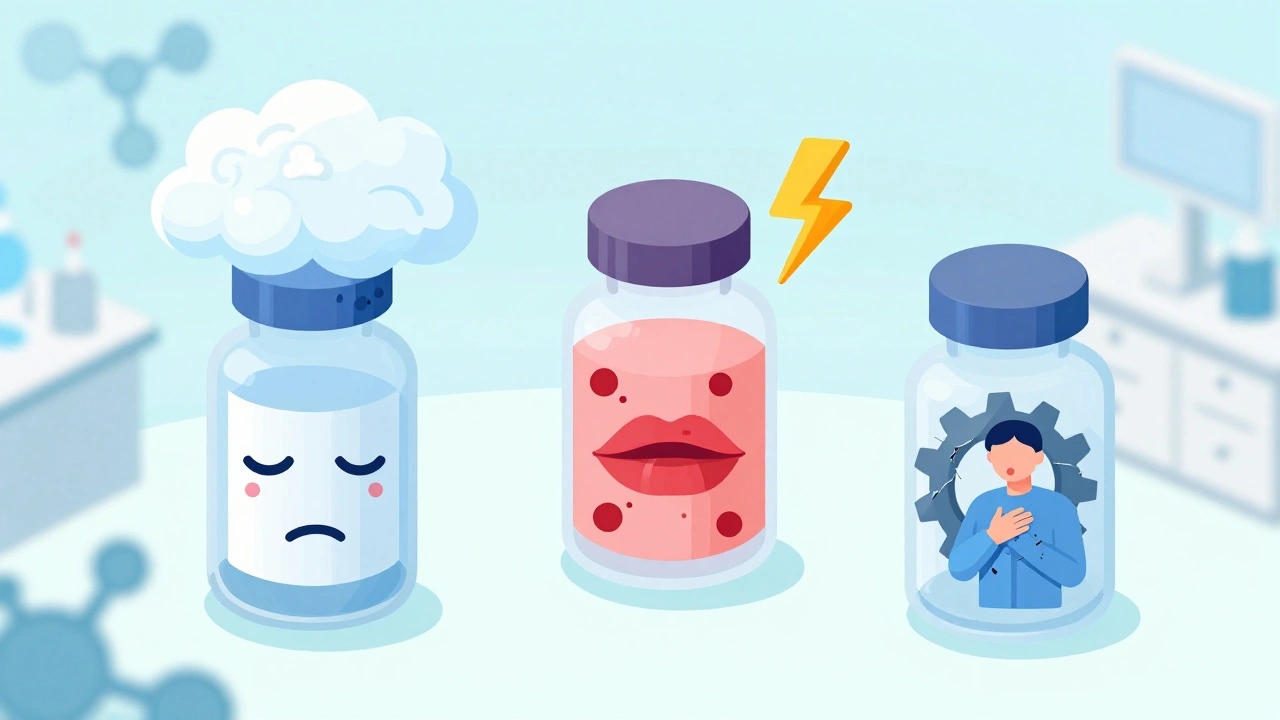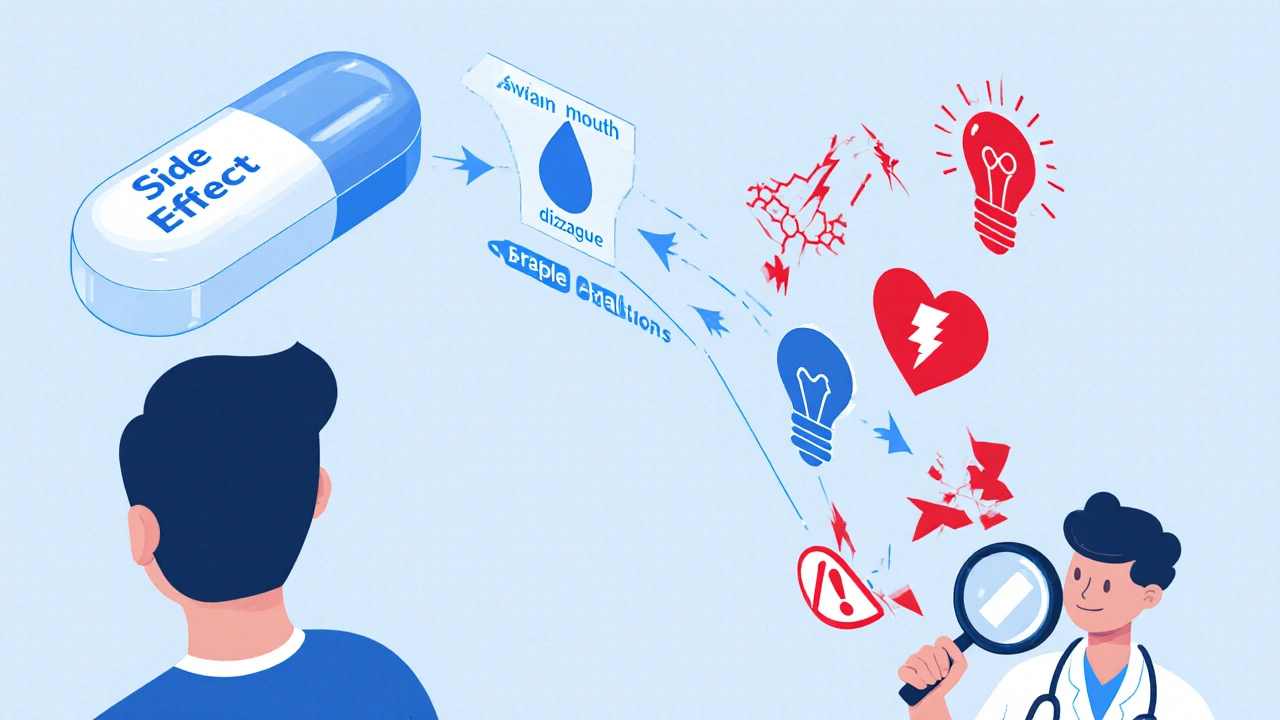Side Effects: What to Watch for in Common Medications
Ever taken a pill and suddenly felt dizzy, nauseous, or a rash appear? That’s a side effect – your body’s reaction to a drug beyond its main purpose. While many side effects are mild and go away on their own, some can signal a bigger problem. Knowing what to expect, how to spot red flags, and what to do about them can keep you safe and confident when you’re on medication.
Why Do Side Effects Happen?
Drugs are designed to interact with specific parts of your body, but they can also affect other systems unintentionally. Genetics, age, other meds, and existing health conditions shape how you react. For example, Nexium (esomeprazole) reduces stomach acid, but it can also interfere with calcium absorption, leading to bone issues over time. Fosamax (alendronate) helps strengthen bones, yet it may cause stomach irritation if not taken with enough water.
Common Side Effects Across Popular Drugs
Below are quick snapshots of side effects you’ll often read about in the posts on our site:
- Nexium: headache, diarrhea, and rare long‑term risk of low magnesium.
- Fosamax: heartburn, unusual jaw pain, and occasional bone pain.
- Lisinopril (ACE inhibitor): dry cough, elevated potassium, and dizziness when you stand up.
- Losartan: mild fatigue, nasal congestion, and rare allergic skin reactions.
- Apixaban (blood thinner): bruising, bleeding gums, and occasional stomach upset.
These are not exhaustive, but they give you a sense of what to monitor. If you notice something new after starting a med, write it down – date, severity, and anything that seemed to trigger it.
Practical Tips to Manage and Report Side Effects
1. Read the label. The boxed warning and the ‘possible side effects’ list are there for a reason. Skim them before you start.
2. Take meds exactly as directed. Many side effects stem from improper use. For Fosamax, take the tablet with a full glass of water and stay upright for at least 30 minutes.
3. Keep a symptom journal. A simple notebook or phone note can help your doctor see patterns and decide if you need a dosage change.
4. Know when to call a professional. Severe symptoms – like trouble breathing, swelling of the face, or uncontrolled bleeding – require immediate medical attention. For milder issues, schedule a call with your pharmacist or doctor.
5. Don’t stop a medication abruptly. Some drugs, like blood thinners or steroids, need a taper plan. Stopping suddenly can cause a rebound effect that’s worse than the original side effect.
How to Reduce the Risk of Unwanted Reactions
Stay hydrated, eat balanced meals, and avoid alcohol if your med interacts poorly with it. If you’re on multiple prescriptions, ask your pharmacist for a drug‑interaction check. Lifestyle tweaks, like adding potassium‑rich foods when on ACE inhibitors, can offset certain risks.
Lastly, remember that not every side effect shows up for everyone. Your experience may differ from a friend’s or a review online. Trust your body, stay informed, and keep the conversation open with your healthcare team.
Side effects can feel intimidating, but with the right knowledge they become manageable. Use these tips the next time you start a medication, and you’ll be better equipped to stay healthy and confident.
Learn how to tell the difference between side effects, drug allergies, and intolerance. Most people mislabel side effects as allergies-this guide shows you how to spot the real dangers and avoid unnecessary medication risks.
Learn the real difference between medication side effects and adverse drug reactions-why it matters for your safety, how to spot them, and what to do when you experience a reaction.
A clear comparison of Chlorambucil with other chemotherapy drugs, covering effectiveness, side effects, costs, and patient tips to help you choose the right treatment.
Learn what Imodium does, how it works, correct dosage, safety tips, and typical side effects. Get clear answers for everyday use.




